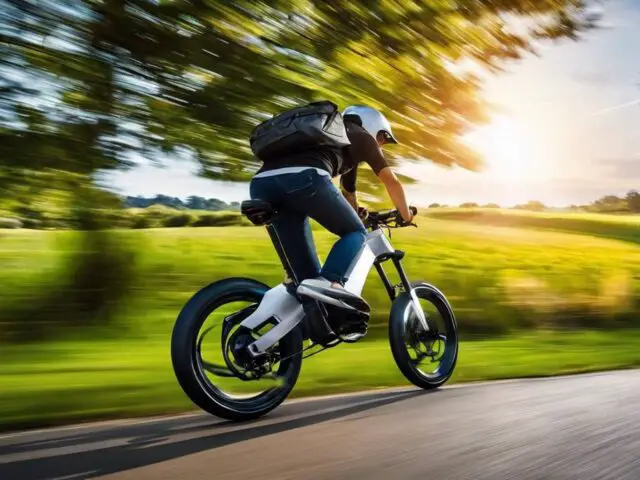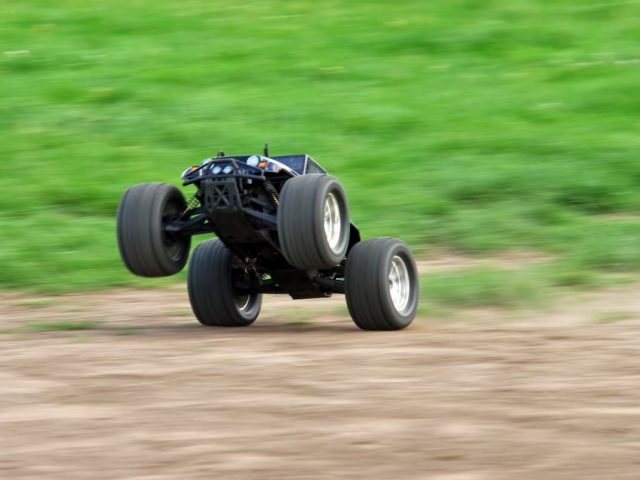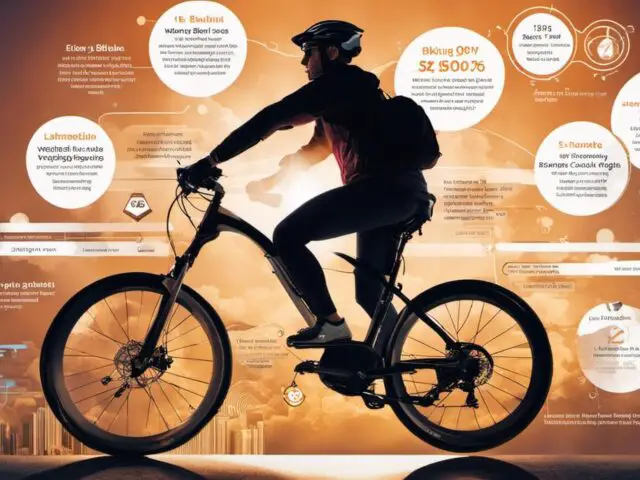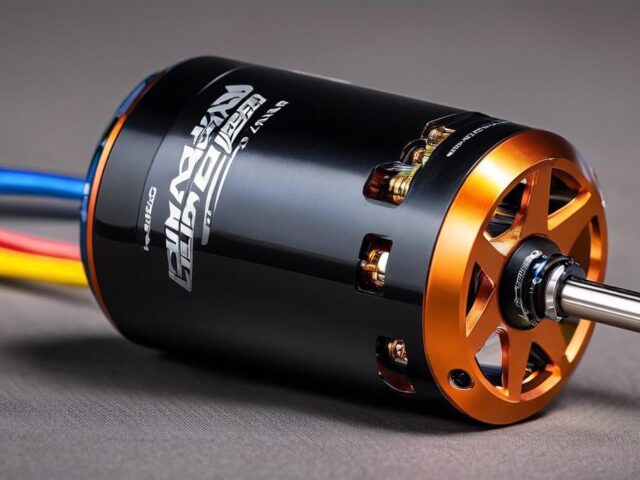In the bewitching cloak of darkness, the skylines of our cities are increasingly being illuminated by the mesmerizing spectacle that is drone light shows. Through the novel fusion of drone technology, GPS accuracy, and vivid LED lights, these shows are redefining entertainment, heralding the night sky as the next frontier for our fantasies. We invite you to join this enthralling journey into the world of drone light shows. Armed with an understanding of the intricate drone technology, a glance into the painstaking preparations and executions necessary, the crucial regulations and environmental implications in place, and the stirring exemplars of such shows that have left indelible marks, we will paint an all-encompassing picture of this exciting realm and its strides for the future.
Understanding Drone Technology
Understanding Drones and Their Functionality
Drones, also known as unmanned aerial vehicles (UAVs), operate in a variety of ways, depending on their size, design, and functionality. Some are simple quadcopters with rudimentary control mechanisms, while others are sophisticated machines equipped with high-resolution cameras and advanced navigation systems. In the context of light shows, drones are typically small, lightweight, and outfitted with multi-colored LED lights capable of creating a vivid spectacle in the night sky.
Types of Drones Used in Light Shows
The most common types of drones used in light shows are quadcopters due to their inherent stability and ease of control. These types of drones often come with GPS systems for accurate positioning, and gyroscopic sensors for maintaining stability in a wide range of flight conditions. Quadcopters for light shows also feature LED lights that can change colors and intensity, enabling them to create a dynamic light spectacle in synchrony with other drones.
GPS and Sensor Systems in Drone Light Shows
The coordination of drone light shows heavily relies on the Global Positioning System (GPS) and various sensor modalities. Each drone is programmed with a specific flight path and time sequence for changing its LED lights. Using GPS, each drone knows exactly where it is in relation to other drones and the ground, allowing for highly coordinated aerial maneuvers.
Apart from GPS, drones are also equipped with sensors like accelerometers and gyros that measure acceleration and orientation, respectively. This facilitates stable flight while ensuring the drones maintain their positions relative to each other. Ultimately, through the integration of GPS and sensor systems, drone swarms can create stunning, precise patterns and images within the night sky.
Do you want to make money by using drones for your business?
Technological Advancements: Making Drone Light Shows Possible
The first drone light shows were held in 2015, and since then, advancements in drone, sensor, and visualization technologies have made this phenomenon increasingly popular. Miniaturization of components has allowed for the creation of tiny, light-weight drones that are capable of long-duration flights.
Simultaneously, advancements in LED light technology have enabled each drone to carry hundreds of tiny, powerful lights. This creates a richer spectrum of colors and more striking effects, resulting in a captivating visual performance.
Software advances have also paved the way for larger-scale shows with thousands of drones. Sophisticated software algorithms allow for the precise synchronization and positioning of drones, making it possible to create complex shapes, patterns, and animations.
Finally, improvements in battery life have played an essential role in the progression of drone light shows. With more energy-efficient drone models emerging on the market, drone light shows have become longer and more complex, adding more depth to the captivating spectacle.
The Emergence and Significance of Drone Light Shows
In the dawn of technological advancement, drone light shows have begun to dazzle audiences worldwide and are increasingly being used as a thrilling alternative to traditional fireworks. Surging in popularity due to their environmentally friendly and safe nature, drones also offer an unparalleled level of customization as they can be pre-programmed to form intricate shapes, words or even animations in the sky. With the promise of technological evolution, the mesmerizing spectacle of drone light shows is only expected to offer even more enchanting possibilities in the future.
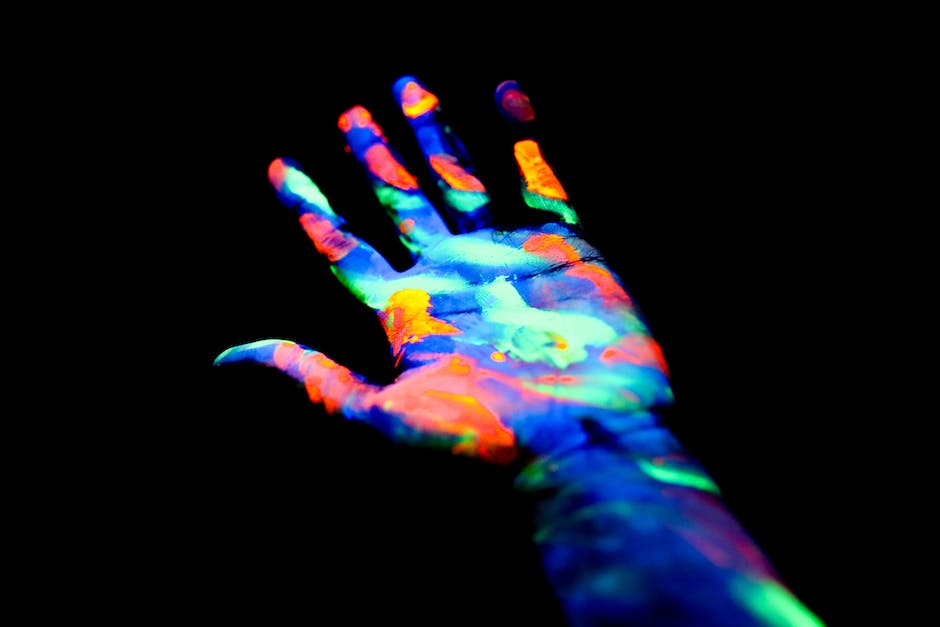
Preparation and Execution of Drone Light Shows
The Intricacies of Crafting a Drone Light Show
The process of bringing an awe-inspiring drone light show to life begins with the conceptualization and meticulous design of the performance. This involves considering a multitude of elements ranging from the theme of the event, the length of the show, the number of drones to utilize, all the way to adhering to the allocated budget. Once these details are mapped out, the carefully assembled design team employ advanced softwares such as Autodesk’s 3D Studio Max or Rhino 3D to construct a three-dimensional simulation of the light show. In order to ensure seamless synchronisation of light, movement and sound, designers join forces with choreographers to skilfully integrate the flight patterns with the event’s music and storyline.
Programming the Drones
Next comes the step of programming the drones. Each drone’s flight path and light sequence are individually programmed, and then carefully synchronized with the others to form patterns and images in the sky. This task is completed utilizing specialized software, which includes built-in collision avoidance algorithms, ensuring the safe and smooth execution of complex maneuvers. The software also allows programmers to simulate the entire show before the actual event, giving them the opportunity to evaluate the performance and make necessary modifications.
Setting Up the Launch Zone
Preparing the launch area is a vital aspect of conducting a drone light show. The drones must be stationed and launched in such a way that they seamlessly enter the performance airspace. Location-specific considerations are examined, such as local weather conditions, airspace restrictions, proximity to buildings, and crowd safety. Protective nets are often used in the launch and landing area to protect the drones from wind and other external factors.
Launching the Drones
The drones used in light shows are autonomous, guided by GPS and pre-programmed via onboard computers. At the time of the show, the launch command is sent via a secure wireless connection from the ground control station, and each drone lifts-off and positions itself as per the predesigned patterns. These drones are equipped with LED lights which can produce millions of color combinations, creating stunning visuals in the sky.
Monitoring and Control
Perfect performances are ensured through real-time monitoring and control over all the drones throughout the show. Advanced software systems enable controllers to monitor each drone’s position and status, allowing them to react promptly in case of issues such as low battery, signal loss, or external interference. The software can also command a faulty drone to return to the launch area and replace it with a reserve drone. Moreover, in case of an emergency, all drones can be instructed to execute a safe and controlled landing to ensure public safety.
Behind the Scenes of Drone Light Shows
When considering the astonishing visuals of a drone light show, it’s easy to overlook the depth of preparation and execution involved behind the scenes. This complex operation involves a harmonious collaboration among skilled professionals – including designers, programmers, engineers, and operating crews. Together, they orchestrate a symphony of light and movement in the sky, transforming these technological marvels into a spectacle to behold.

Regulations and Environmental Impact
Understanding the Regulations Behind Drone Light Shows
As drone light shows rise in popularity, becoming a compelling alternative to traditional fireworks, they also encounter a strict regulatory framework. The Federal Aviation Administration (FAA) mandates that anyone planning a drone light show acquire the appropriate permissions and permits. This attention to detail becomes crucial as these shows usually involve hundreds of drones gliding through the sky in a meticulously orchestrated pattern, with safety and legality at the forefront.
A significant aspect of these regulations revolves around airspace restrictions. The FAA requires drones to stay below 400 feet in uncontrolled or “Class G” airspace, avoiding any nearby obstacles. Regulations also stipulate that operators must not fly the drones above people or moving vehicles, and that they cannot interfere with manned aircraft operations. Above all, the operation of drone light shows must not jeopardize the safety of individuals or property on the ground.
The FAA’s Remote Pilot Certification is a necessity for all drone operators, underlining their thorough understanding of aviation rules and safety guidelines. It also ensures that the drones utilized in the show are in line with FAA’s requirements – including a remote ID for drone identification during enforcement situations.
Safety Measures for Drone Light Shows
Safety precautions are integral while planning and conducting a drone light show. Drones used in these shows should be checked thoroughly for any malfunctions to mitigate the possibilities of mid-air breakdowns. Additionally, in the case of any technological failures, parachutes or similar fail-safe devices must be installed in the drones to avoid injuries or damage to property on the ground.
Organizers of drone light shows must also prepare for abrupt weather changes, including high winds or lightning, which could heavily impact the event. Emergency procedures should be in place, and the ability to instantly ground all drones is a must to ensure public safety.
Environmental Impact of Drone Light Shows
Despite the breathtaking beauty of drone light shows, concerns about their environmental impact are voiced. One significant issue is noise pollution. Unlike fireworks, drones are relatively quiet, but the combined noise of hundreds of drones can potentially disturb local residents, as well as local fauna.
Energy consumption is another environmental aspect to consider. The operation of multiple drone batteries could lead to a significant amount of energy demand. However, it’s still less than a traditional fireworks display.
A significant concern surrounds the potential disturbance to wildlife. Birds, in particular, could be affected by large-scale drone displays. Bright lights and unexpected movement in the sky could cause confusion and stress among local bird populations. It’s therefore advisable to conduct thorough environmental studies before organizing a drone light show to minimize potential disturbances to wildlife.
Despite the obstacles involved, drone light shows could indeed offer a serene, safer, and better-orchestrated alternative to fireworks. Assuming that necessary precautions, authorizations, and safety protocols are observed, these drone displays can provide an incredible spectacle that has a reduced impact on the environment.
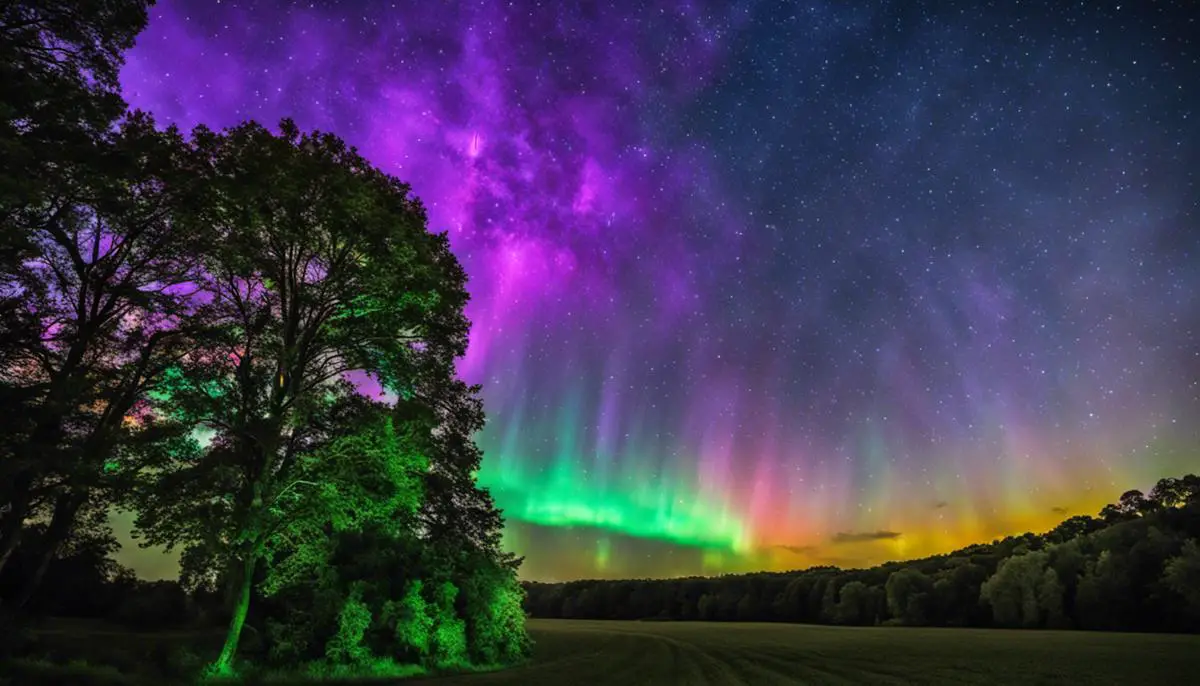
Notable Drone Light Shows and Future Trends
The Wonders in the Night Sky: Memorable Drone Light Shows by Intel and Disney
Drone light shows correlate with massive public events, gifting audiences with awe-inspiring visuals to commemorate significant occasions. Various companies, including stalwarts like Intel and Disney, have been the pioneers in delivering this crowd-pleasing form of entertainment, curating remarkable and unforgettable experiences through their shows
Intel has attained a premier position in delivering drone light shows, repeatedly wooing audiences with charming displays in the night sky using their custom-made Shooting Star drones. Purpose-built for light shows, these drones are relatively light, weighing a tad more than half a pound, and can be operated from a single system. Capable of generating millions of color variations, they are ideal for sketching vivid pictures and moving images in the sky.
Among Intel’s unforgettable shows, the drone spectacle performed during the 2018 Winter Olympics in Pyeongchang, South Korea, steals the limelight. Here, 1,218 drones collaborated to craft a myriad of animations, including the emblematic Olympic Rings. This breathtaking performance gained a place in the Guinness World Record for the “most number of unmanned aerial vehicles in the sky simultaneously.”
Disney, a universal name synonymous with enchanting and memorable entertainment pieces, has taken a leap into drone light shows too. Collaborating with Intel, Disney staged “Starbright Holidays,” a dazzling show deploying 300 drones above Disney Springs in Florida to celebrate the yuletide season. Acting as a significant milestone in the evolution of drone light shows, this event highlighted the technology to the general public.
Technological Advancements Shaping the Future of Drone Light Shows
As technology evolves, so do drone light shows. Advances in drone technology, enabling improvements in flight precision, battery duration, and illumination level, are allowing for bigger and more complex shows.
Artificial Intelligence (AI) also plays a critical role in the development of drone light shows. AI technologies enable drones in a fleet to communicate with each other in real-time, adjusting flight patterns instantaneously based on the behaviors of their counterparts. This ensures the drones maintain the correct formation and positions, which generate the stunning images viewed by the audience.
Additionally, high-resolution LED lights attached to drones are continually improving, offering a broader scope of color variations and brightness. The inclusion of these LED lights has made drone light shows even more visually spectacular, being visible even in urban areas with heavy light pollution.
Future Applications of Drone Light Shows in Different Sectors
While entertainment is a major market for drone light shows, the technology has many other potential applications. In advertising, drones can offer an innovative and engaging way to create advertisements visible from far distances. Some companies have already started leveraging this, using drones to display their logos or promotional messages in the sky.
Emergency services could also benefit from drone light shows, using them to provide crucial information during crises and natural disasters. Strategically programmed, illuminating drones can display evacuation routes or hazard warnings, quickly transmitting essential information to large crowds.
Environmental sciences are another area where drone light shows could make an impact. Specifically in the study of bird migration and behavior, researchers can use drone formations to simulate predator attacks or rival flocks, helping to better understand and protect these species.

Drone light shows, with their blend of cutting-edge technology, precision, and creativity, have seized our imagination and the horizon of nighttime entertainment. They’ve transcended their role as mere novelties to become a meaningful and exciting way of celebration and communication. As we’ve uncovered, these dazzling drone ballets in the sky are a product of innovative technology, meticulous preparation, and stringent regulation. They carry their own set of environmental implications that need careful consideration. As we stand on the precipice of a future marked by ongoing technological advancements, these drone light shows assert themselves as a potent symbol of our era – mirroring our technological prowess, our unlimited imagination, and our collective drive towards a future filled with possibility and wonder.
Helpful Links
For all your RC Questions, Click HERE
If you are interested in RC cars and trucks, RC World has you covered.
For RC boats and watercraft, check these articles out.
For all your RC Airborne endeavors, we have everything you need.
E-Skateboards vs Regular: UX Showdown
The evolution of skateboarding from kick-pushing along sun-drenched boulevards to harnessing the whir of electric motors represents more than just a shift in technology—it marks a significant divide…
Electrify Your Fishing Game with E-bikes
Fishing and biking – two passions that, when combined, create an extraordinary duo in the great outdoors. As an introduction, let’s dive deep into the remarkable world of…
14 Electric Skateboards With Customizable Speed Settings
The world of electric skateboarding has seen significant technological advancements in the past few years, transforming it from a leisure activity to one associated with speed, control and…
Pushing Performance Limits [ Maximizing Cheap RC Cars ]
Top tier RC cars can be pretty expensive. Not everyone has the luxury to invest loads of money on a good quality RC car. But, you’re a RC…
How to Start a Gas Powered RC Car
You have heard about glow starters and Shaft starters, but you may be wondering how to start a gas-powered RC car. There are several advantages to pull start…
RC Cars in 2021: Are They a Waste of Money or Not
RC cars tend to provide lots of fun and excitement to the people of all ages and experience levels. However, sometimes the people who are looking to make…
How E-Bikes Can Help Your Weight Loss Journey
Are you looking for a fun and effective way to kickstart your weight loss journey? Look no further than an e-bike! These electric bicycles have been gaining popularity…
The Exciting Rise of Eco-Friendly E-Bikes: A Glimpse at Sustainable Transport’s Future
As global climate change persists, people from all walks of life are seeking more sustainable ways to travel. One solution gaining traction is the eco-friendly E-bike. These technologically…
9 Best Motors to Supercharge Your Electric Skateboard Acceleration
The quest for the perfect electric skateboard is often a fusion of technology, power, and finesse. At the heart of this quest lie the motors that drive the…


